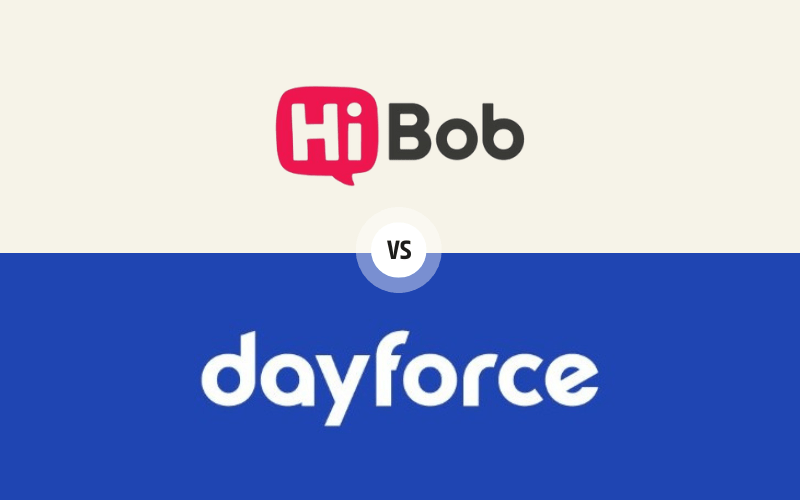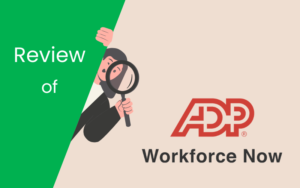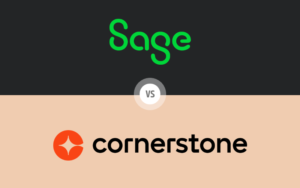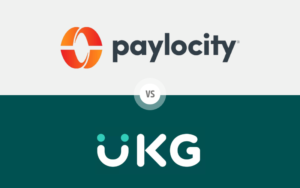In this blog post, we’ll dive into a detailed comparison of Hibob vs Dayforce, exploring the key features and functionalities of each Human Capital Management software. Whether you’re managing a small business or a large enterprise, understanding the differences between these platforms can significantly impact your HR management decisions. We will cover various aspects such as user interface, core HR functions, payroll management, and more to help you determine which system best aligns with your organizational needs.
Table of Contents
User Interface and User Experience
When comparing Hibob vs Dayforce, the user interface (UI) and user experience (UX) are crucial factors to consider. Both platforms are designed to streamline HR processes, but they have distinct approaches to UI and UX.

Hibob User Interface and User Experience
Hibob boasts a modern, visually appealing interface that prioritizes user-friendliness. Its dashboard is clean and intuitive, making it easy for users to navigate through various features without extensive training. The layout is customizable, allowing HR teams to tailor the interface to suit their specific needs.
Key Features of Hibob UI/UX:
- Customization: Users can personalize the dashboard with widgets and shortcuts to frequently used functions, enhancing efficiency.
- Visual Design: The interface uses vibrant colors and engaging visuals, creating a pleasant and engaging experience for users.
- Ease of Use: The platform is designed to be intuitive, reducing the learning curve for new users and minimizing the need for extensive training.
Dayforce User Interface and User Experience
Dayforce, while also user-friendly, adopts a more traditional approach compared to Hibob. Its interface is designed to be comprehensive and functional, catering to the needs of larger organizations with complex HR requirements. The platform offers robust functionality, but it may require more time to master due to its extensive feature set.
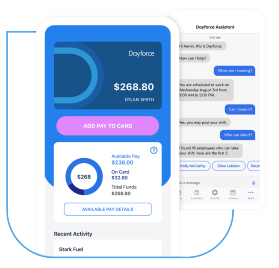
Key Features of Dayforce UI/UX:
- Functionality: The platform provides a wealth of features and options, making it suitable for detailed HR management tasks.
- Navigation: While comprehensive, the interface is logically organized, helping users find the necessary tools and information.
- Professional Design: The design is professional and straightforward, focusing on functionality over aesthetics.
Comparison and Conclusion
In the debate of Hibob vs Dayforce, the choice of user interface and user experience will largely depend on the specific needs of your organization. Hibob excels in providing a modern, visually appealing, and highly customizable experience, making it ideal for smaller to mid-sized businesses looking for simplicity and ease of use. On the other hand, Dayforce offers a more traditional, feature-rich interface that, while potentially more complex, is suited for larger organizations requiring comprehensive HR functionality.
Choosing between Hibob and Dayforce will depend on whether your priority is a modern, user-friendly design or a comprehensive, functionality-driven interface.
Core HR Functions
When comparing Hibob vs Dayforce, evaluating their core HR functions is essential. Both platforms aim to simplify and enhance human resource management, but they offer different strengths and features.

Hibob Core HR Functions
Hibob provides a robust suite of core HR functions tailored to streamline HR processes for small to mid-sized businesses. The platform focuses on delivering an intuitive and efficient experience.
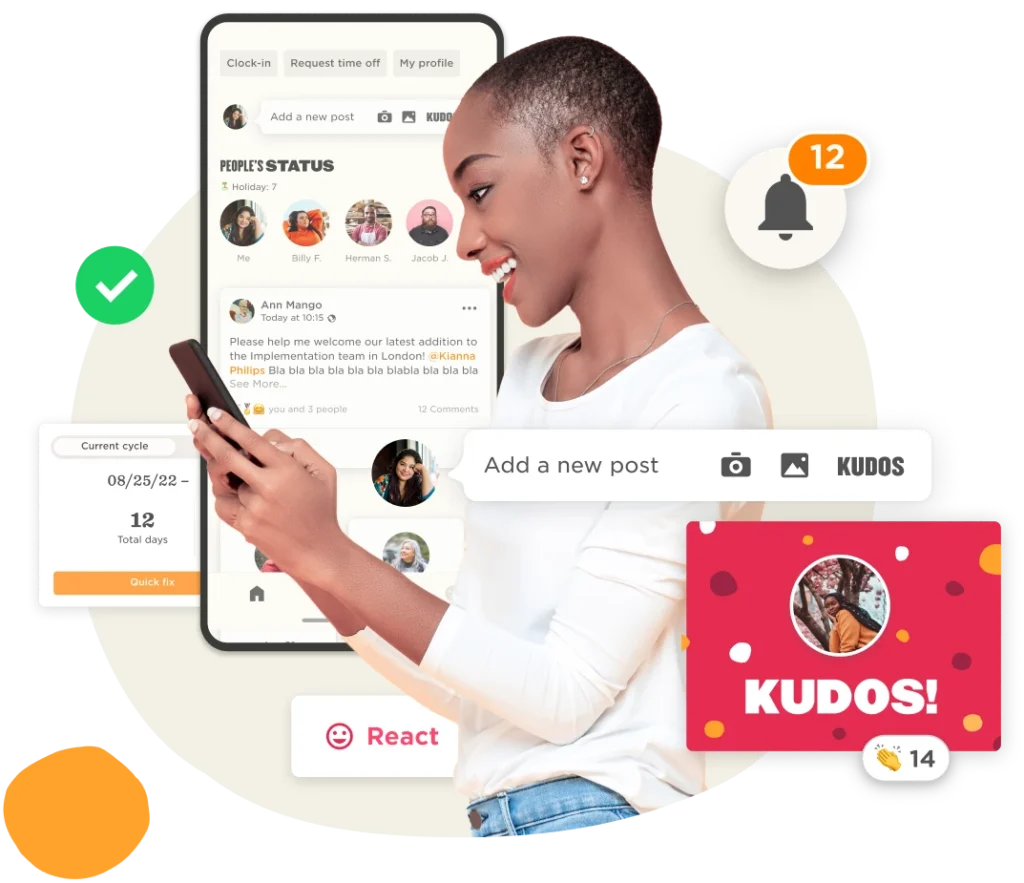
Key Core HR Functions of Hibob:
- Employee Record Management: Hibob allows easy management of employee records with a centralized database, enabling quick access to essential information.
- Onboarding and Offboarding: The platform offers a seamless onboarding process with customizable workflows, ensuring new hires are integrated smoothly. Offboarding is equally streamlined, with automated processes to handle employee exits.
- Employee Self-Service: Hibob empowers employees with self-service capabilities, allowing them to update personal information, request time off, and access essential documents without needing HR intervention.
Dayforce Core HR Functions
Dayforce caters to larger organizations with comprehensive core HR functions designed to handle complex HR needs efficiently. Its extensive feature set supports detailed HR management.
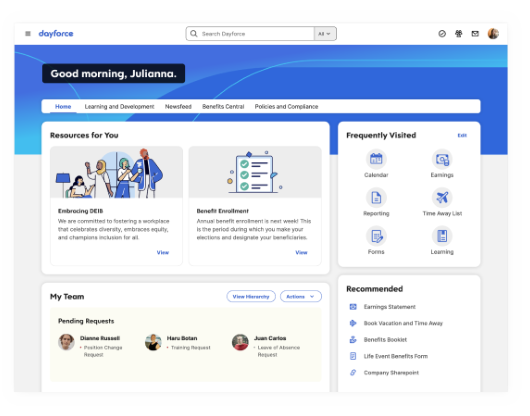
Key Core HR Functions of Dayforce:
- Employee Record Management: Dayforce offers a detailed and extensive employee record management system, providing in-depth profiles and easy access to critical data.
- Onboarding and Offboarding: The platform’s onboarding and offboarding processes are highly customizable and integrate with other HR functions, ensuring compliance and efficiency.
- Employee Self-Service: Dayforce provides a robust self-service portal where employees can manage their information, request time off, view pay stubs, and access company resources, enhancing employee autonomy.
Comparison and Conclusion
When examining Hibob vs Dayforce in terms of core HR functions, the choice depends on your organization’s size and needs. Hibob excels in providing an easy-to-use, efficient solution for small to mid-sized businesses, focusing on user-friendly employee management, streamlined onboarding, and effective self-service capabilities. Conversely, Dayforce offers a more detailed and extensive suite of core HR functions suited for larger organizations with complex HR requirements.
Selecting between Hibob and Dayforce will depend on whether you need a straightforward, user-friendly platform or a comprehensive, feature-rich solution to meet your HR management needs.
Payroll Management
A critical aspect of evaluating Hibob vs Dayforce is understanding their payroll management capabilities. Effective payroll management ensures timely and accurate compensation, which is vital for employee satisfaction and compliance.

Hibob Payroll Management
Hibob integrates seamlessly with various payroll systems, offering flexibility and convenience for small to mid-sized businesses. Although it doesn’t include a native payroll processing system, its integrations make payroll management efficient and straightforward.
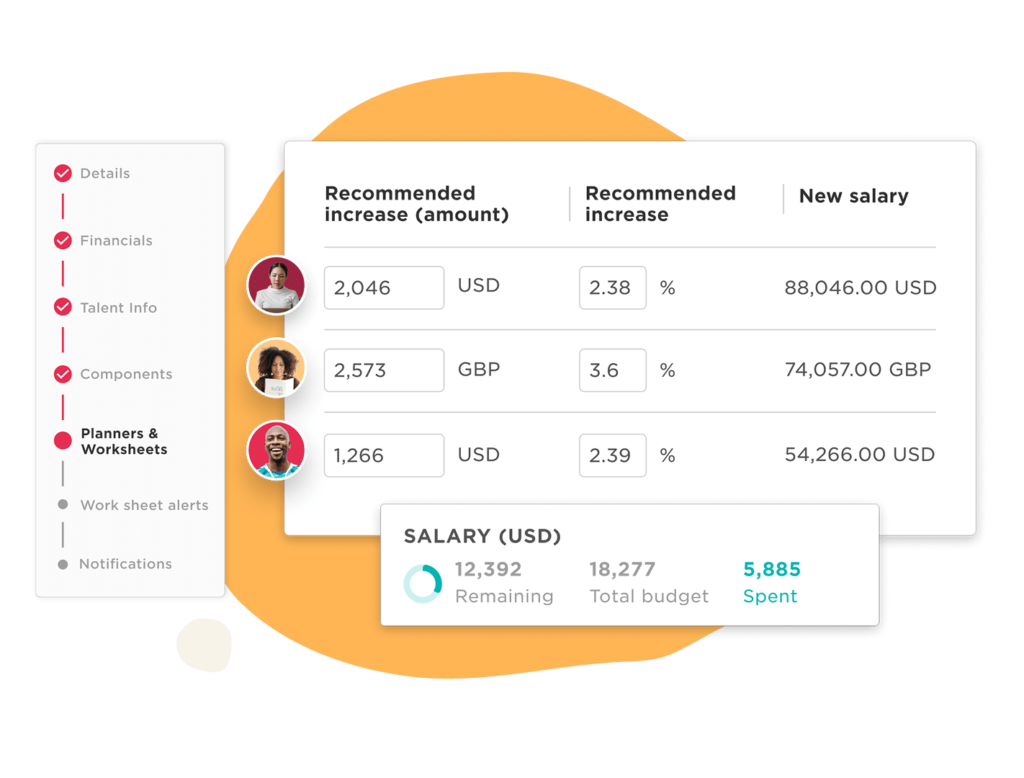
Key Payroll Management Features of Hibob:
- Integration with Payroll Providers: Hibob connects with popular payroll providers, allowing businesses to choose the best fit for their needs and ensuring smooth data transfer.
- Payroll Data Management: The platform ensures accurate employee data management, reducing errors in payroll processing by keeping records up-to-date and synchronized.
- Compliance Support: Hibob helps maintain compliance with labor laws and regulations by integrating with compliant payroll systems and providing relevant data and reports.
Dayforce Payroll Management
Dayforce excels in payroll management, offering a comprehensive, fully integrated payroll system. This makes it a strong choice for larger organizations with complex payroll needs.
Key Payroll Management Features of Dayforce:
- Real-Time Payroll Processing: Dayforce processes payroll in real-time, allowing for immediate updates and adjustments, which reduces errors and ensures accuracy.
- Compliance and Reporting: The platform provides extensive compliance support, including automated tax filing and detailed reporting, helping businesses stay compliant with local and international regulations.
- Advanced Features: Dayforce offers advanced payroll features such as wage garnishments, benefits deductions, and multi-country payroll support, making it ideal for multinational companies.
Comparison and Conclusion
When comparing Hibob vs Dayforce in payroll management, the primary difference lies in the depth and integration of their payroll systems. Hibob, with its flexible integration capabilities, is suitable for businesses that prefer using dedicated payroll providers. It ensures accurate data management and compliance support through seamless integrations.
On the other hand, Dayforce offers a robust, all-in-one payroll solution, making it an excellent choice for larger organizations with complex payroll requirements. Its real-time processing, advanced features, and comprehensive compliance support provide a powerful and efficient payroll management experience.
Choosing between Hibob and Dayforce for payroll management depends on whether your organization needs flexible integrations with payroll providers or a fully integrated, feature-rich payroll system.
Time and Attendance Tracking
A crucial component in the Hibob vs Dayforce comparison is time and attendance tracking. Accurate tracking of employee hours is essential for payroll, compliance, and overall workforce management.

Hibob Time and Attendance Tracking
Hibob offers a user-friendly time and attendance tracking system that caters to the needs of small to mid-sized businesses. Its intuitive design makes it easy for both employees and managers to use.
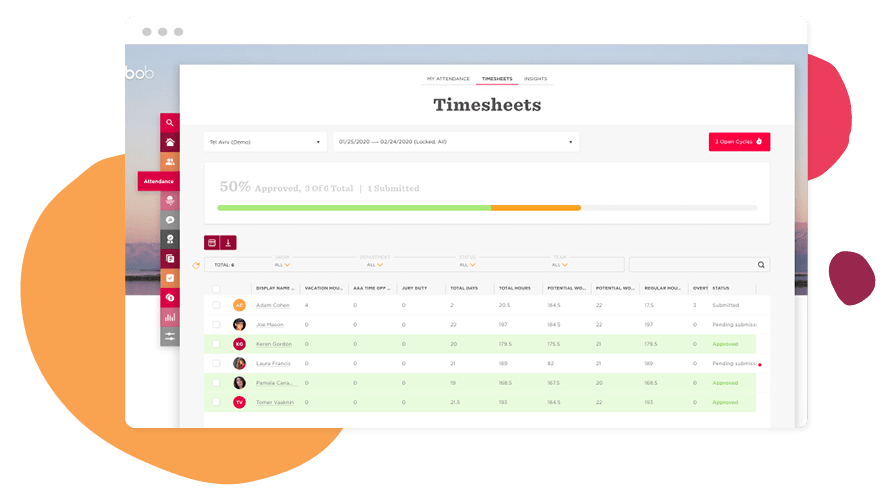
Key Time and Attendance Tracking Features of Hibob:
- Clock In/Out Features: Employees can easily clock in and out using a web or mobile interface, ensuring accurate time tracking.
- Time Off Management: Hibob simplifies the process of requesting and approving time off, providing a clear overview of available leave balances and upcoming absences.
- Integration with Payroll: The platform seamlessly integrates with payroll systems, ensuring that tracked hours are accurately reflected in payroll processing.
Dayforce Time and Attendance Tracking
Dayforce provides a comprehensive and advanced time and attendance tracking system, suitable for larger organizations with complex scheduling needs.
Key Time and Attendance Tracking Features of Dayforce:
- Advanced Scheduling: Dayforce offers sophisticated scheduling tools that allow managers to create and adjust schedules easily, taking into account employee availability, labor laws, and business needs.
- Real-Time Tracking: The platform provides real-time tracking of employee hours, ensuring up-to-date and accurate attendance records.
- Compliance Management: Dayforce helps organizations stay compliant with labor laws and regulations by automating rules related to overtime, breaks, and other labor requirements.
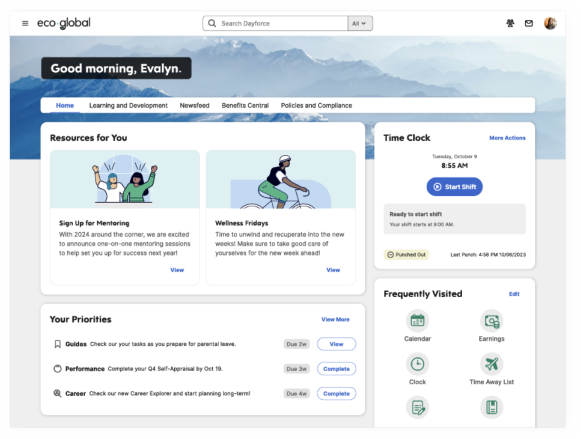
Comparison and Conclusion
When evaluating Hibob vs Dayforce in terms of time and attendance tracking, it’s clear that both platforms offer robust solutions tailored to different organizational needs. Hibob provides an easy-to-use, intuitive system ideal for small to mid-sized businesses, focusing on essential features like clocking in/out, time off management, and payroll integration.
Conversely, Dayforce offers a more advanced and comprehensive solution, designed to meet the needs of larger organizations with complex scheduling and compliance requirements. Its advanced scheduling tools, real-time tracking, and robust compliance management make it a powerful choice for managing time and attendance effectively.
Choosing between Hibob and Dayforce will depend on whether your organization requires a straightforward, user-friendly solution or a detailed, feature-rich system for managing time and attendance.
Benefits Administration
Benefits administration is a critical component in the Hibob vs Dayforce comparison. Effective benefits management ensures that employees receive and understand their benefits, which is vital for retention and satisfaction.

Hibob Benefits Administration
Hibob offers a straightforward and efficient benefits administration system designed to simplify the process for both HR teams and employees. The platform focuses on providing clarity and ease of use.
Key Benefits Administration Features of Hibob:
- Benefits Enrollment: Hibob simplifies the benefits enrollment process with an intuitive interface that guides employees through their options and selections.
- Integration with Providers: The platform integrates with various benefits providers, ensuring seamless data transfer and up-to-date information.
- Employee Portal: Hibob provides an employee portal where individuals can view their benefits, make changes during open enrollment periods, and access related documents.
Dayforce Benefits Administration
Dayforce offers a comprehensive benefits administration system tailored for larger organizations with more complex needs. Its robust features provide extensive management capabilities and detailed insights.
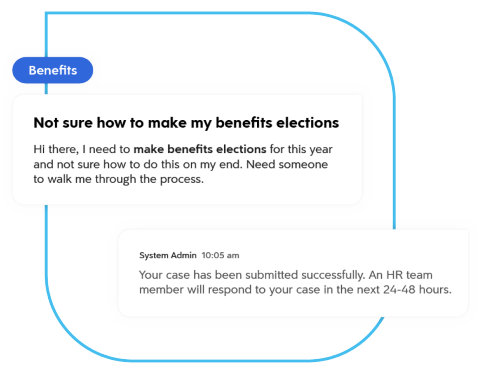
Key Benefits Administration Features of Dayforce:
- Comprehensive Enrollment Process: Dayforce offers a detailed and customizable benefits enrollment process that accommodates various plan types and options.
- Automated Benefits Management: The platform automates many aspects of benefits administration, from eligibility tracking to open enrollment, reducing administrative burden.
- Advanced Analytics: Dayforce provides advanced analytics and reporting tools that help HR teams understand benefits utilization, costs, and trends, aiding in strategic decision-making.
Comparison and Conclusion
In the comparison of Hibob vs Dayforce for benefits administration, both platforms offer robust solutions tailored to different organizational needs. Hibob excels in providing a user-friendly, straightforward system that simplifies benefits management for small to mid-sized businesses. Its intuitive enrollment process, integration with providers, and employee portal make it easy for employees to understand and manage their benefits.
On the other hand, Dayforce offers a more comprehensive and detailed benefits administration system suitable for larger organizations. Its customizable enrollment process, automated management features, and advanced analytics provide a powerful toolkit for managing complex benefits plans and making informed strategic decisions.
Choosing between Hibob and Dayforce for benefits administration will depend on whether your organization needs a simple, user-friendly solution or a detailed, feature-rich system capable of handling complex benefits requirements.
Performance Management
Performance management is a key area of comparison in the Hibob vs Dayforce debate. Effective performance management systems help organizations enhance productivity, align goals, and support employee development.

Hibob Performance Management
Hibob offers a modern and intuitive performance management system designed to support continuous feedback and development. The platform emphasizes simplicity and user engagement.
Key Performance Management Features of Hibob:
- Goal Setting and Tracking: Hibob allows managers and employees to set, track, and update goals, ensuring alignment with organizational objectives.
- Continuous Feedback: The platform supports continuous feedback, enabling regular check-ins and ongoing performance discussions between employees and managers.
- Performance Reviews: Hibob simplifies the performance review process with customizable templates and automated reminders, making it easy to conduct regular appraisals.
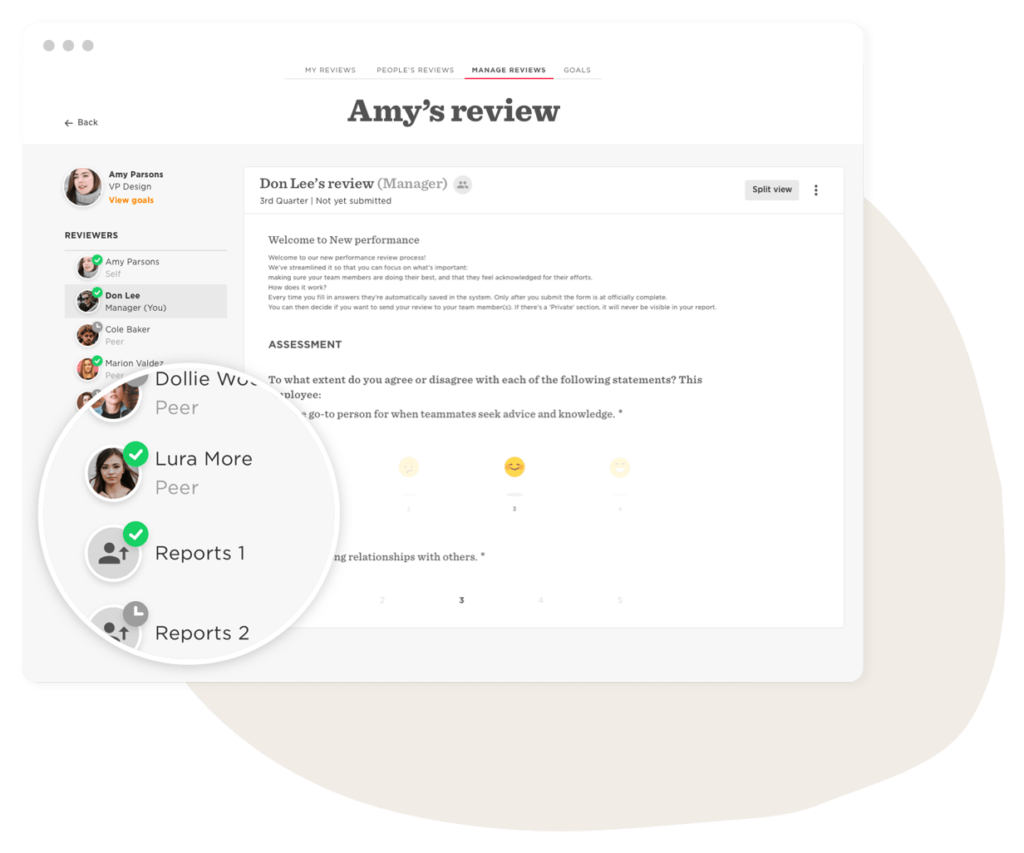
Dayforce Performance Management
Dayforce provides a comprehensive performance management system tailored for larger organizations seeking detailed and robust tools to manage employee performance.
Key Performance Management Features of Dayforce:
- Integrated Goal Management: Dayforce offers integrated goal management that aligns individual goals with organizational objectives, providing visibility and tracking at all levels.
- 360-Degree Feedback: The platform includes 360-degree feedback capabilities, allowing input from peers, subordinates, and supervisors for a holistic view of performance.
- Advanced Analytics: Dayforce provides advanced analytics and reporting tools, giving managers insights into performance trends and identifying areas for improvement and development.
Comparison and Conclusion
In the Hibob vs Dayforce comparison for performance management, the choice depends on the specific needs of your organization. Hibob excels in providing a simple, user-friendly performance management system ideal for small to mid-sized businesses. Its focus on continuous feedback, easy goal setting, and streamlined performance reviews helps create a culture of continuous improvement and engagement.
Conversely, Dayforce offers a more comprehensive and advanced performance management system suitable for larger organizations. Its integrated goal management, 360-degree feedback, and advanced analytics provide a powerful framework for managing and improving employee performance on a broader scale.
Choosing between Hibob and Dayforce for performance management will depend on whether your organization needs a straightforward, easy-to-use solution or a detailed, feature-rich system capable of supporting complex performance management processes.
Talent Management and Recruiting
Talent management and recruiting are vital components to consider in the Hibob vs Dayforce comparison. Efficient talent management and recruiting systems can significantly impact an organization’s ability to attract, develop, and retain top talent.

Hibob Talent Management and Recruiting
Hibob offers a user-friendly talent management and recruiting module designed for small to mid-sized businesses. The platform focuses on simplicity and efficiency to enhance the hiring and talent development processes.
Key Talent Management and Recruiting Features of Hibob:
- Applicant Tracking System (ATS): Hibob includes a straightforward ATS that helps HR teams manage the hiring process from posting jobs to onboarding new hires. The system supports job posting, candidate tracking, and interview scheduling.
- Employee Development: The platform provides tools for tracking employee development, including skill assessments, career path planning, and training opportunities.
- Performance and Potential: Hibob allows managers to assess both performance and potential, helping to identify high-potential employees and plan for future leadership roles.
Dayforce Talent Management and Recruiting
Dayforce offers a comprehensive talent management and recruiting system designed to meet the needs of larger organizations. Its robust features provide extensive support for both recruitment and employee development.
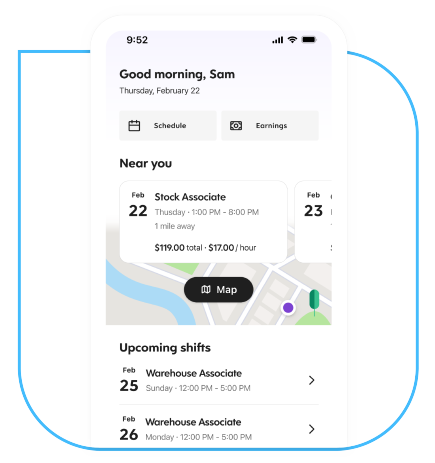
Key Talent Management and Recruiting Features of Dayforce:
- Advanced Applicant Tracking System (ATS): Dayforce provides an advanced ATS with capabilities for job requisition management, candidate sourcing, interview scheduling, and onboarding. It integrates seamlessly with other HR functions for a smooth hiring process.
- Succession Planning: The platform includes powerful tools for succession planning, allowing organizations to identify and prepare future leaders by tracking employee readiness and development needs.
- Talent Analytics: Dayforce offers advanced analytics and reporting tools to provide insights into recruiting metrics, talent gaps, and employee performance, aiding in strategic decision-making.
Comparison and Conclusion
In the comparison of Hibob vs Dayforce for talent management and recruiting, both platforms offer strong solutions tailored to different organizational needs. Hibob provides a straightforward and efficient system ideal for small to mid-sized businesses. Its focus on user-friendly applicant tracking, employee development, and performance assessment makes it easy for HR teams to manage talent effectively.
On the other hand, Dayforce offers a more comprehensive and feature-rich talent management and recruiting system suitable for larger organizations. Its advanced ATS, succession planning tools, and talent analytics provide a robust framework for managing recruitment and employee development on a broader scale.
Choosing between Hibob and Dayforce for talent management and recruiting will depend on whether your organization needs a simple, efficient solution or a detailed, advanced system capable of supporting complex talent management processes.
Learning and Development
Learning and development are crucial components in the Hibob vs Dayforce comparison. Effective learning and development programs help organizations enhance employee skills, boost engagement, and support career growth.

Hibob Learning and Development
Hibob offers a streamlined and user-friendly learning and development module designed to help small to mid-sized businesses foster employee growth and development. The platform focuses on simplicity and accessibility.
Key Learning and Development Features of Hibob:
- Training Management: Hibob allows HR teams to manage and track training programs easily. Users can create, assign, and monitor training courses to ensure employees are gaining necessary skills.
- Development Plans: The platform supports the creation of individual development plans, helping employees and managers outline and achieve career goals.
- Learning Resources: Hibob provides access to various learning resources, including articles, videos, and e-learning modules, to support continuous learning.
Dayforce Learning and Development
Dayforce offers a comprehensive learning and development system tailored for larger organizations with complex needs. Its robust features provide extensive support for employee training and career growth.
Key Learning and Development Features of Dayforce:
- Integrated Learning Management System (LMS): Dayforce includes a powerful LMS that supports the creation, delivery, and tracking of training programs. The system integrates seamlessly with other HR functions to provide a cohesive learning experience.
- Skill Assessment and Development: Dayforce offers tools for assessing employee skills and identifying development needs, allowing for personalized learning plans and targeted training.
- Advanced Reporting: The platform provides advanced reporting and analytics tools to track training progress, measure learning outcomes, and identify skill gaps.
Comparison and Conclusion
In the Hibob vs Dayforce comparison for learning and development, both platforms offer robust solutions tailored to different organizational needs. Hibob excels in providing a straightforward and user-friendly system ideal for small to mid-sized businesses. Its focus on easy training management, development plans, and access to learning resources helps organizations foster continuous learning and development.
Conversely, Dayforce offers a more comprehensive and advanced learning and development system suitable for larger organizations. Its integrated LMS, skill assessment tools, and advanced reporting capabilities provide a powerful framework for managing employee training and career growth on a larger scale.
Choosing between Hibob and Dayforce for learning and development will depend on whether your organization needs a simple, accessible solution or a detailed, feature-rich system capable of supporting complex learning and development processes.
Reporting and Analytics
Reporting and analytics are essential aspects to consider in the Hibob vs Dayforce comparison. Effective reporting and analytics capabilities enable organizations to make data-driven decisions, track performance, and identify trends.

Hibob Reporting and Analytics
Hibob offers a user-friendly reporting and analytics module designed to help small to mid-sized businesses gain insights from their HR data. The platform focuses on simplicity and accessibility, making it easy for HR teams to generate and interpret reports.
Key Reporting and Analytics Features of Hibob:
- Customizable Reports: Hibob allows users to create and customize reports based on various HR metrics, such as employee turnover, attendance, and performance.
- Real-Time Data: The platform provides real-time data updates, ensuring that reports reflect the most current information.
- Data Visualization: Hibob includes data visualization tools, such as charts and graphs, to help users easily interpret and present data.
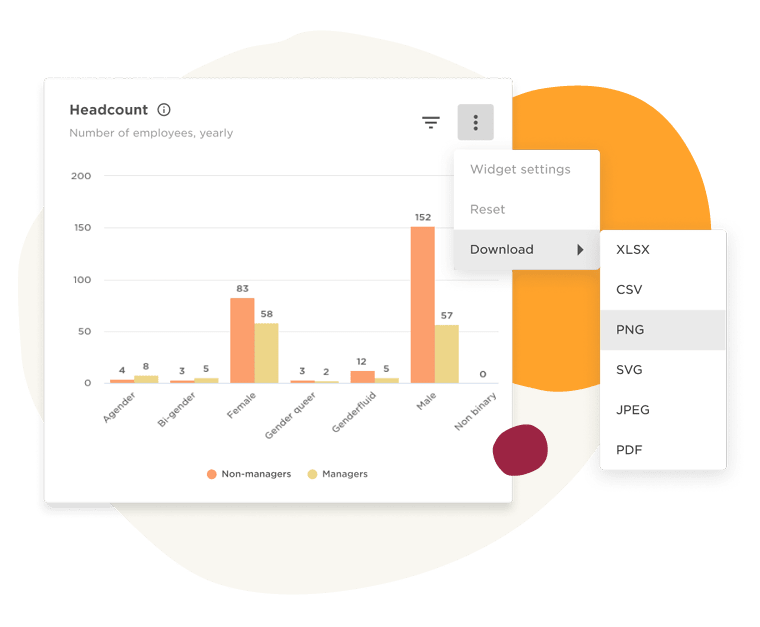
Dayforce Reporting and Analytics
Dayforce offers a comprehensive and advanced reporting and analytics system suitable for larger organizations with complex data needs. Its robust features provide extensive support for data analysis and decision-making.
Key Reporting and Analytics Features of Dayforce:
- Advanced Analytics Tools: Dayforce includes advanced analytics tools that allow for in-depth analysis of HR data, including predictive analytics and trend analysis.
- Comprehensive Reporting: The platform provides a wide range of pre-built reports and the ability to create custom reports, covering various aspects of HR, such as payroll, compliance, and performance.
- Interactive Dashboards: Dayforce offers interactive dashboards that provide real-time insights and allow users to drill down into specific data points for detailed analysis.
Comparison and Conclusion
In the Hibob vs Dayforce comparison for reporting and analytics, both platforms offer robust solutions tailored to different organizational needs. Hibob excels in providing a simple, user-friendly system ideal for small to mid-sized businesses. Its customizable reports, real-time data, and data visualization tools make it easy for HR teams to generate and interpret meaningful insights.
Conversely, Dayforce offers a more comprehensive and advanced reporting and analytics system suitable for larger organizations. Its advanced analytics tools, comprehensive reporting capabilities, and interactive dashboards provide a powerful framework for data analysis and decision-making on a broader scale.
Choosing between Hibob and Dayforce for reporting and analytics will depend on whether your organization needs a straightforward, accessible solution or a detailed, feature-rich system capable of supporting complex data analysis and reporting needs.
Compliance and Security
Compliance and security are critical factors to evaluate in the Hibob vs Dayforce comparison. Ensuring that HR systems meet regulatory standards and protect sensitive data is essential for any organization.

Hibob Compliance and Security
Hibob provides robust compliance and security features designed to help small to mid-sized businesses meet regulatory requirements and protect employee data.
Key Compliance and Security Features of Hibob:
- Data Protection: Hibob uses advanced encryption methods to safeguard employee data, ensuring that sensitive information is securely stored and transmitted.
- Regulatory Compliance: The platform helps businesses comply with various labor laws and regulations, including GDPR, by providing tools and reports that ensure adherence to legal requirements.
- Audit Trails: Hibob maintains detailed audit trails, recording all changes made within the system. This feature helps organizations track actions and demonstrate compliance during audits.
Dayforce Compliance and Security
Dayforce offers a comprehensive set of compliance and security features tailored for larger organizations with complex needs. Its robust system provides extensive support for regulatory compliance and data security.
Key Compliance and Security Features of Dayforce:
- Comprehensive Data Security: Dayforce employs state-of-the-art security measures, including encryption, multi-factor authentication, and regular security audits, to protect sensitive employee information.
- Global Compliance: The platform supports compliance with a wide range of international labor laws and regulations, making it suitable for multinational organizations. It includes automated compliance updates to ensure adherence to changing laws.
- Detailed Reporting and Analytics: Dayforce provides detailed compliance reports and analytics, helping businesses monitor and demonstrate compliance with various regulations. The platform also includes tools for managing and tracking mandatory training and certifications.
Comparison and Conclusion
In the comparison of Hibob vs Dayforce for compliance and security, both platforms offer strong solutions tailored to different organizational needs. Hibob excels in providing essential compliance and security features suitable for small to mid-sized businesses. Its focus on data protection, regulatory compliance, and audit trails ensures that businesses can meet legal requirements and protect sensitive information effectively.
Conversely, Dayforce offers a more comprehensive and advanced system suitable for larger organizations with complex compliance and security needs. Its state-of-the-art security measures, global compliance support, and detailed reporting capabilities provide a powerful framework for managing compliance and ensuring data security on a larger scale.
Choosing between Hibob and Dayforce for compliance and security will depend on whether your organization needs a straightforward, essential solution or a detailed, feature-rich system capable of supporting complex and international compliance and security requirements.
Integration and Compatibility
When comparing Hibob vs Dayforce, integration and compatibility are essential factors to consider. Both platforms offer different approaches to integrating with other systems, which can impact the overall efficiency and flexibility of your HR operations.
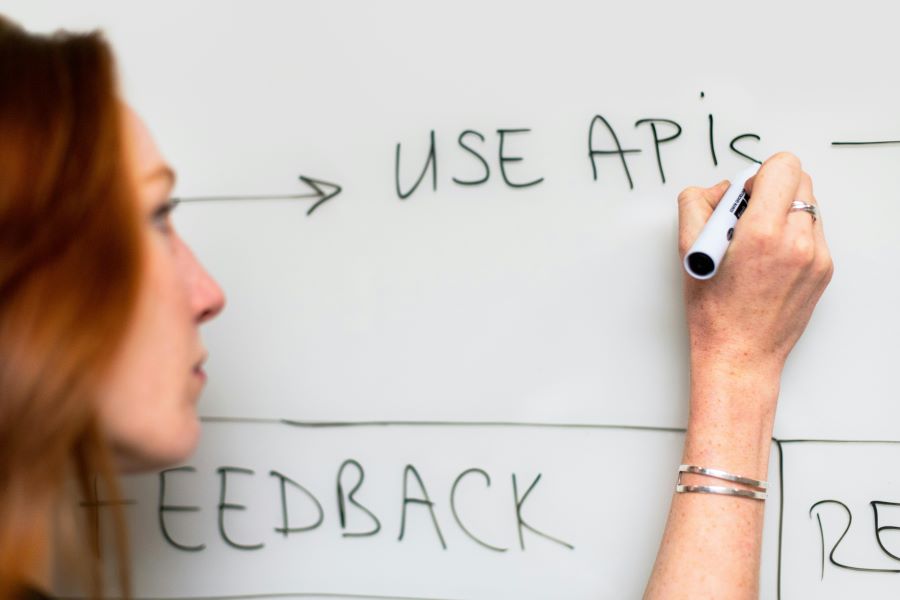
Hibob Integration and Compatibility
Hibob is designed with flexibility in mind, offering various integration options to ensure seamless connectivity with other business systems. This approach helps small to mid-sized businesses streamline their HR processes.
Key Integration and Compatibility Features of Hibob:
- Third-Party Integrations: Hibob integrates with numerous third-party applications, including payroll systems, time tracking tools, and productivity apps. This ensures that businesses can create a cohesive HR ecosystem tailored to their needs.
- API Availability: Hibob provides a robust API, allowing businesses to develop custom integrations and enhance the platform’s functionality to meet specific requirements.
- Data Synchronization: The platform ensures real-time data synchronization across integrated systems, reducing the risk of data discrepancies and improving overall efficiency.
Dayforce Integration and Compatibility
Dayforce offers a comprehensive and advanced integration framework suitable for larger organizations with complex system requirements. Its robust features provide extensive support for seamless connectivity and data sharing.
Key Integration and Compatibility Features of Dayforce:
- Comprehensive Integrations: Dayforce supports a wide range of integrations with various business systems, including ERP, CRM, and other HR applications. This ensures a unified approach to data management and process automation.
- API and SDK: Dayforce provides extensive API and SDK capabilities, enabling businesses to develop custom integrations and tailor the platform to their unique needs.
- Integration Hub: The platform includes an integration hub that simplifies the process of connecting with other systems, providing pre-built connectors and integration templates for common applications.
Comparison and Conclusion
In the Hibob vs Dayforce comparison for integration and compatibility, both platforms offer strong solutions tailored to different organizational needs. Hibob excels in providing flexible integration options suitable for small to mid-sized businesses. Its focus on third-party integrations, API availability, and real-time data synchronization ensures that businesses can create a cohesive and efficient HR ecosystem.
Conversely, Dayforce offers a more comprehensive and advanced integration framework suitable for larger organizations. Its extensive support for various business systems, robust API and SDK capabilities, and integration hub provide a powerful toolkit for managing complex integration needs and ensuring seamless data sharing across the organization.
Choosing between Hibob and Dayforce for integration and compatibility will depend on whether your organization needs a flexible, easy-to-use solution or a detailed, feature-rich system capable of supporting complex and extensive integration requirements.
Customer Support and Service
Customer support and service are critical aspects to consider when comparing Hibob vs Dayforce. Effective customer support ensures that users can efficiently resolve issues, receive guidance, and maximize the platform’s benefits.
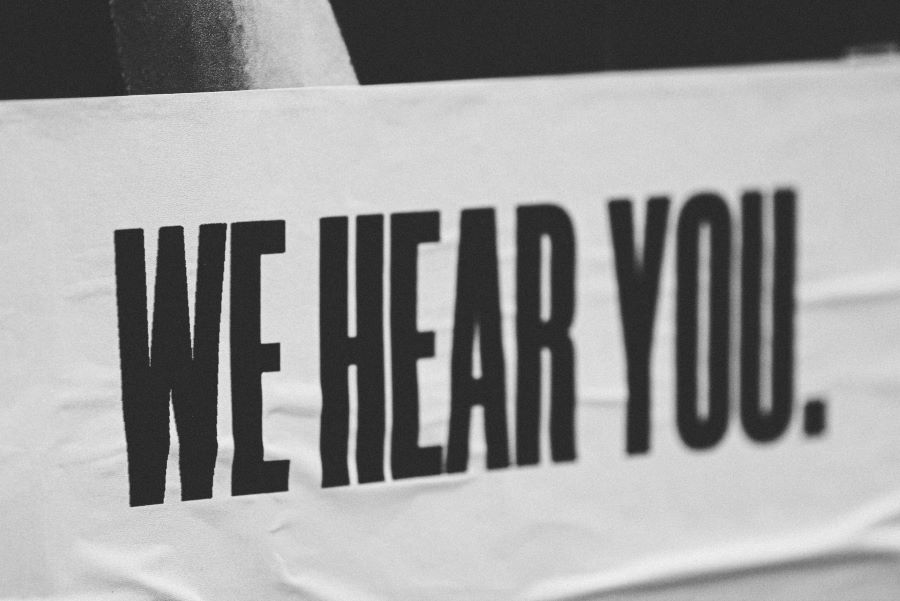
Hibob Customer Support and Service
Hibob provides a range of customer support options designed to help small to mid-sized businesses get the most out of their HR platform. The company’s approach focuses on accessibility and responsiveness.
Key Customer Support and Service Features of Hibob:
- Multiple Support Channels: Hibob offers support through various channels, including email, live chat, and phone, ensuring that users can quickly reach out for help.
- Comprehensive Help Center: The platform includes a detailed help center with articles, tutorials, and FAQs, allowing users to find answers to common questions and learn how to use different features.
- Dedicated Customer Success Manager: Hibob assigns a dedicated customer success manager to each client, providing personalized support and guidance to ensure a smooth implementation and ongoing usage.
Dayforce Customer Support and Service
Dayforce offers a comprehensive and robust customer support system tailored for larger organizations with complex needs. Its extensive support options provide users with multiple ways to get assistance and ensure smooth operation.
Key Customer Support and Service Features of Dayforce:
- 24/7 Support: Dayforce provides round-the-clock support through phone, email, and live chat, ensuring that users can get help whenever they need it, regardless of time zones.
- Extensive Knowledge Base: The platform includes an extensive knowledge base with detailed articles, guides, and video tutorials, helping users to self-serve and resolve issues independently.
- Dedicated Account Manager: Dayforce assigns a dedicated account manager to each client, offering personalized support, strategic advice, and assistance with optimizing the platform’s use.
- Training and Resources: Dayforce offers comprehensive training programs and resources, including webinars, workshops, and certification courses, to help users enhance their skills and knowledge.
Comparison and Conclusion
In the Hibob vs Dayforce comparison for customer support and service, both platforms offer strong solutions tailored to different organizational needs. Hibob excels in providing accessible and responsive support options suitable for small to mid-sized businesses. Its multiple support channels, comprehensive help center, and dedicated customer success manager ensure that users can get the help they need efficiently.
On the other hand, Dayforce offers a more comprehensive and robust support system suitable for larger organizations. Its 24/7 support, extensive knowledge base, dedicated account manager, and extensive training resources provide a powerful framework for ensuring smooth operation and maximizing the platform’s benefits.
Choosing between Hibob and Dayforce for customer support and service will depend on whether your organization needs a straightforward, accessible solution or a detailed, feature-rich system capable of supporting complex and extensive support requirements.
Pricing and Cost-effectiveness
When evaluating Hibob vs Dayforce, pricing and cost-effectiveness are crucial factors to consider. Both platforms offer different pricing models and value propositions, catering to various organizational sizes and needs.

Hibob Pricing and Cost-effectiveness
Hibob is designed to be an affordable and scalable solution for small to mid-sized businesses. Its pricing model is transparent and flexible, making it accessible for growing companies.
Key Pricing Features of Hibob:
- Subscription Model: Hibob operates on a subscription-based pricing model, charging a monthly fee per employee. This allows businesses to scale their costs according to their workforce size.
- Transparent Pricing: Hibob provides clear and transparent pricing information on their website, ensuring that businesses understand the costs upfront without hidden fees.
- Value for Money: Hibob offers a comprehensive set of HR features at a competitive price, making it a cost-effective solution for businesses looking to streamline their HR processes without breaking the bank.
For more information about pricing, please visit Hibob’s website.
Dayforce Pricing and Cost-effectiveness
Dayforce offers a more complex pricing structure tailored for larger organizations with diverse needs. While it may come at a higher cost, its extensive features and capabilities provide significant value for larger enterprises.
Key Pricing Features of Dayforce:
- Custom Pricing: Dayforce provides custom pricing based on the specific needs and size of the organization. This approach ensures that businesses pay for the features and services they require.
- Comprehensive Features: Although Dayforce may have a higher price point, it offers a wide range of advanced features and integrations that provide significant value, particularly for larger organizations with complex requirements.
- Return on Investment: Dayforce’s robust functionality and comprehensive support can lead to improved efficiency and cost savings in the long run, making it a cost-effective solution for large enterprises.
For more information about pricing, please visit Dayforce’s website.
Comparison and Conclusion
In the Hibob vs Dayforce comparison for pricing and cost-effectiveness, the choice largely depends on the size and needs of your organization. Hibob excels in offering a transparent, affordable pricing model ideal for small to mid-sized businesses. Its subscription-based pricing, clear cost structure, and comprehensive features provide excellent value for money.
On the other hand, Dayforce offers a more tailored pricing approach suitable for larger organizations. While it may have a higher cost, its extensive features, custom pricing, and potential for long-term savings through improved efficiency make it a cost-effective solution for enterprises with complex HR needs.
Choosing between Hibob and Dayforce for pricing and cost-effectiveness will depend on whether your organization requires a straightforward, affordable solution or a detailed, feature-rich system that can provide significant value and ROI over time.
User Reviews and Testimonials
User reviews and testimonials provide valuable insights into the real-world performance and satisfaction levels of Hibob vs Dayforce. Understanding how actual users feel about these platforms can help organizations make informed decisions.
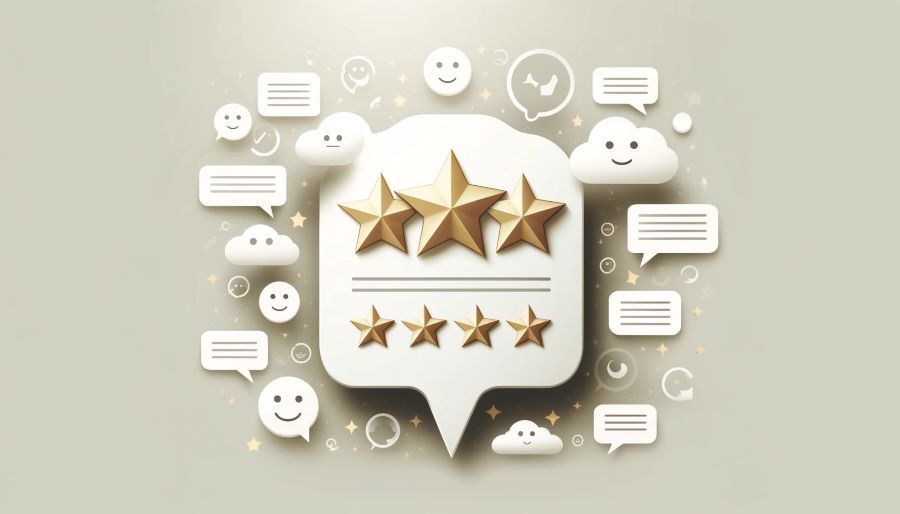
Hibob User Reviews and Testimonials
Hibob is well-regarded for its user-friendly interface and responsive customer support. Small to mid-sized businesses particularly appreciate its ease of use and the positive impact on HR processes.
Key Highlights from Hibob User Reviews:
- Ease of Use: Many users highlight Hibob’s intuitive design, which makes it easy for HR teams and employees to navigate and utilize the platform’s features without extensive training.
- Customer Support: Users often praise Hibob’s customer support, noting the quick response times and helpful guidance provided by their support team.
- Streamlined HR Processes: Reviews frequently mention the efficiency gained from using Hibob, with features like onboarding, performance management, and time tracking receiving positive feedback.
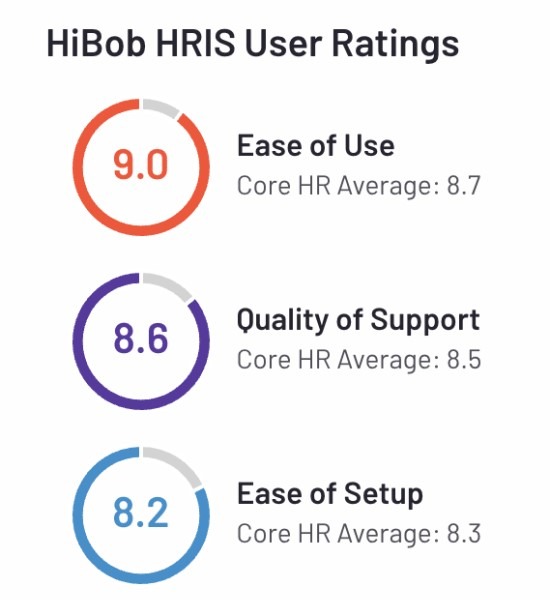
Dayforce User Reviews and Testimonials
Dayforce receives high marks from larger organizations for its comprehensive feature set and robust integration capabilities. Users appreciate the platform’s ability to handle complex HR needs and its reliable performance.
Key Highlights from Dayforce User Reviews:
- Comprehensive Features: Users frequently commend Dayforce for its extensive range of HR functionalities, which cover everything from payroll to talent management and compliance.
- Integration Capabilities: Many reviews highlight the seamless integration with other business systems, making Dayforce a central hub for various HR processes.
- Reliable Performance: Larger organizations appreciate the platform’s reliability and robustness, noting that it effectively supports their complex and large-scale HR operations.
Comparison and Conclusion
In the Hibob vs Dayforce comparison for user reviews and testimonials, both platforms receive positive feedback but cater to different organizational needs. Hibob is praised for its user-friendly design, excellent customer support, and the efficiency it brings to HR processes. This makes it a popular choice among small to mid-sized businesses looking for an intuitive and effective HR solution.
Conversely, Dayforce is lauded for its comprehensive feature set, robust integration capabilities, and reliable performance. These attributes make it a preferred option for larger organizations with complex HR needs and a requirement for a centralized, all-encompassing HR platform.
Choosing between Hibob and Dayforce based on user reviews and testimonials will depend on your organization’s size, complexity, and specific HR requirements. User feedback consistently highlights Hibob’s ease of use and support, while Dayforce’s extensive features and reliability are significant advantages for larger enterprises.
Conclusion
When deciding between Hibob vs Dayforce, it’s essential to consider the specific needs and priorities of your organization. Both platforms offer robust HR solutions, but they cater to different types of businesses and use cases.
Hibob is an excellent choice for small to mid-sized businesses seeking a user-friendly and affordable HR platform. Its intuitive interface, customizable features, and responsive customer support make it ideal for organizations looking to streamline their HR processes without extensive training or high costs. Hibob excels in core HR functions, benefits administration, and providing a seamless user experience.
Dayforce, on the other hand, is tailored for larger organizations with more complex needs. Its comprehensive feature set, advanced analytics, and powerful integration capabilities make it a formidable HR solution for enterprises. Dayforce shines in areas like payroll management, compliance, and performance management, offering a level of depth and sophistication that can handle intricate HR requirements.
Ultimately, the choice between Hibob and Dayforce depends on the size and complexity of your organization, as well as your specific HR goals. Hibob provides an accessible and efficient solution for growing businesses, while Dayforce offers the extensive features and scalability needed for large enterprises.
By carefully evaluating the key aspects discussed in this blog post—user interface and user experience, core HR functions, payroll management, time and attendance tracking, benefits administration, performance management, talent management and recruiting, learning and development, reporting and analytics, compliance and security, integration and compatibility, customer support and service, pricing and cost-effectiveness, and user reviews and testimonials – you can make an informed decision that best suits your organization’s HR needs.
Whether you choose Hibob or Dayforce, both platforms are designed to enhance your HR operations, improve employee engagement, and support your organizational growth.
![]()
![]() Read our full Hibob review
Read our full Hibob review
![]()
![]() Read our full Dayforce review
Read our full Dayforce review

